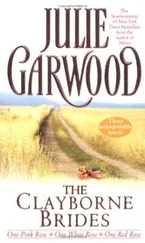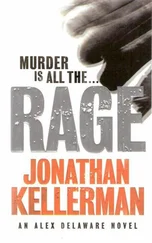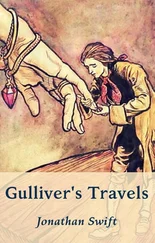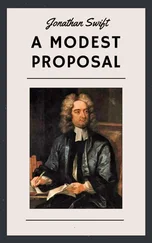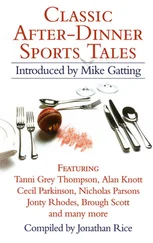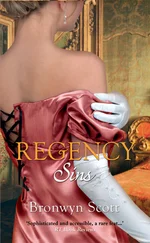The murder enquiry fell within the jurisdiction of Detective Chief Superintendent Jack Dibb, head of West Yorkshire number one crime area, and his junior officer from the Halifax division, Dick Holland. And because all major murder enquiries in West Yorkshire were at that time handled by the Home Office Forensic Science Laboratory at Harrogate, near Leeds, the principal forensic scientist in the case would be one Ronald Outteridge.
Holland’s immediate task was to establish an ‘exclusion zone’, the borders of which would preserve any evidence deposited at the scene by the offender or the victim. Within those borders fingertip searches would be made for clues. Within those borders the story of Lesley Molseed’s death would begin to be told.
The extent of the crime scene, including any possible routes taken by the killer to or from the place where the body had been found, was also marked out. This would be a larger area than the exclusion zone and would include the lay-by and any vantage points from where witnesses might have overlooked the scene of Lesley’s death. This, too, was taped off and guarded by local officers. It would be into these areas that there would come, first, the forensic scientists and the pathologist.
While waiting for the scientists and medical men, Holland began the task of structuring the major investigation, the early stages of which comprise time-honoured routines and procedures which remain common practice today. One key procedure is to attempt to establish the sequence of events at the immediate scene, including the identification of all movements of people (and, essentially, vehicles) and occurrences prior to, during and after the commission of the crime, up to the moment of the discovery of the body so that the exclusion zone can be established. In this way no evidence is lost or contaminated, the value of potential clues is identified and any unconnected material is correctly eliminated.
The experienced police officer, who had attended many, many murder scenes, was able to speculate, quite reasonably, on the circumstances which had brought Lesley to this moor. She had clearly been driven from the back-streets of Rochdale to the moors overlooking the M62 motorway, only twenty yards from the A672 Oldham to Ripponden Road. The frail child had been dragged or carried up forty feet of moorside, to a bracken and heather terrace where she was ultimately found. Had her journey to this final place been non-stop, or had the man taken her elsewhere first? That question would have to wait for an answer. Lesley had undoubtedly been alive when her killer laid her down on the damp ground, but for how long had she been kept there, terrified, before her so-short life was brought to such an unmerciful end?
The forensic scientists and pathologist would soon confirm that, mercifully, she had not been sexually abused, but that, although she had not been interfered with, her last companion had undoubtedly obtained some sexual pleasure from her final hours on earth. Upon her underwear forensic scientists were to find semen, but whether the man had ejaculated in some private, quiet place, or up in the winds and mists of the moors, whether he had done so when she was alive or dead, would also remain unknown. It is known only that the killer had masturbated on to Lesley, and that he had killed her, brutally, stabbing her twelve times in the chest and neck with a small knife, before wiping the blade on her thigh and leaving her, uncovered, to the elements.
The Rochdale police would soon receive many accounts of sightings of Lesley as she walked from her home to the shops, and then at various locations in Rochdale and the surrounding areas. In the initial stages Dick Holland only worked on those sightings of the child which clearly could be relied on, in the hope of piecing together Lesley’s last movements and identifying the moment when her abduction took place. The first witness to confirm that Lesley had left Delamere Road at the time her mother claimed was a young girl called Dianne Reeves, who knew Lesley well. Dianne had seen Lesley turn from Delamere Road into Stiups Lane, passing right by her as Dianne swung on the garden gate at her own home. Mark Conroy, a schoolboy friend of Lesley, saw her further along Stiups Lane as he walked from Kingsway playing-fields across Stiups Lane into a snicket or walkway towards Ansdell Road. Four girlfriends of Lesley’s were heading towards Kingsway playing-fields at this time, and noticed her as she walked along. They and Mark also saw a young ginger-haired girl with a scruffy grey dog, who was so close to Lesley that Mark had thought the two girls were together.
Bernadette Hegarty also saw Lesley walk towards Ansdell Road. She was swinging the blue shopping bag and Bernadette, a 10-year-old neighbour of Lesley’s, thought that she was ‘dilly-dallying’. Bernadette was also heading for the Spar, but took an alternative route which ran parallel with Stiups Lane. She visited the Spar shop, but she did not see Lesley there.
Fifteen-year-old Stephen Tatters, who knew Lesley well, also visited the Spar shop at the same time as Bernadette, but he did not see Lesley there.
John Cooper, a newcomer to the area but one who recognised Lesley, remembered seeing her at twelve fifteen walking towards him on her way to Ansdell Road. He was sure of the time, because he had just asked it of an elderly lady who had been walking in the road ahead of him.
At that time, Anita Owen, aged 13, visited the Spar shop and, having bought some sweets, headed back to her home on Turf Hill Road. She walked along Ansdell Road and was just about to turn right into the snicket leading to Buxton Crescent when Lesley came out of the snicket opposite and to her left from Stiups Lane. The two girls were seen by Jane Jeffreys, a school friend of Anita, who described Lesley’s clothing – especially her socks – with great accuracy. Anita and Lesley said hello. Anita walked on towards Buxton Crescent and last saw Lesley approaching the Spar shop.
Robert and Marion Ellidge, the proprietors of the Spar, were interviewed at 3 p.m. on the Sunday of Lesley’s disappearance. They had closed the shop at 2.10 p.m., and had not seen Lesley all day. Steven Ellidge had worked in the shop with his parents until 12.30 p.m. that day, and had then gone to work on his blue Ford Escort car in a garage on Buxton Crescent. He had seen Danny Molseed searching for his stepdaughter at 2 p.m., and had shortly afterwards gone into the shop and asked his parents if they had seen her. Like them, he was unable to help the police, although he had been backwards and forwards across Ansdell Road several times between 12.30 and 3 p.m.
Frank and Edith Jones owned the tobacconist/confectioner’s shop at 65 Broad Lane, known locally as Margaret’s. Lesley was a regular visitor to that shop, particularly on a Sunday when most other shops were closed. Initially the Joneses said they believed Lesley had not been in the shop that afternoon, but after seeing a photograph of the child they changed their minds, saying that she might have been in around 2 p.m., but that they were not certain whether it had been on the Saturday or the Sunday.
Thus, almost all the sightings of Lesley which were to come to the attention of Dick Holland were for around twelve fifteen on the Sunday, and between Lesley’s home address and the Spar shop. There was one further sighting, by Jacqueline Reilly, who saw Lesley from her kitchen window as she walked along Stiups Lane. Jacqueline Reilly had also seen a small yellow van which appeared to be following behind Lesley, and this fact was noted with some interest since there had already been a number of reports of a yellow van on the Turf Hill Estate acting suspiciously near to young children, in particular at the Kingsway Youth Club on the Friday night prior to Lesley’s disappearance.
Читать дальше


